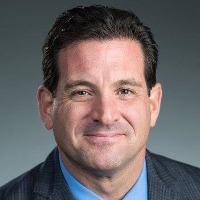In the ever-evolving world of accounting, Certified Public Accountants (CPAs) often find themselves at the forefront, expertly navigating the financial landscapes of their clients. However, while pursuing serving others, CPAs and their firms must pay attention to their own financial well-being – specifically, their retirement planning.
Retirement planning is a cornerstone of personal financial management, ensuring a secure and comfortable financial future. For CPA firms, the necessity is twofold. Firstly, well-structured retirement planning can act as a financial safety net, offering peace of mind as the future inches closer. Secondly, it serves as an invaluable tool in attracting and retaining top talent, presenting your firm as a nurturing and forward-thinking environment that considers the long-term prosperity of its employees.
Our objective is to help you better understand the types of retirement plans available, empowering you to make an informed decision that aligns with your firm’s strategic goals and the personal aspirations of the individuals within it.
The Solo 401(k)
A Solo 401(k) – also known as a One-Participant 401(k) – is a retirement savings plan designed specifically for business owners with no full-time employees other than themselves and their spouses. This plan allows for robust contribution limits, combining both employee and employer contributions.
One of the most significant advantages of a Solo 401(k) lies in its generous contribution limits due to the ability to contribute as both the employee and the employer. As of 2023, participants can contribute up to $20,500 wearing their employee hat (or $27,000 for those age 50 or older).
An additional 25% of ‘employer’ compensation can be contributed for a combined limit of $66,000 (or $73,500 for those 50 +).
Other benefits include taking out a loan against your account funds, which furnishes an additional safety net in times of financial hardship. You can also classify your contributions as either:
a) traditional pre-tax contributions that defer your obligation until you withdraw your funds or
b) post-tax Roth contributions that provide tax-free income in retirement.
However, it’s worth noting that Solo 401(k) plans come with specific administrative responsibilities. Plan holders must file an annual report on Form 5500-EZ if the plan’s assets exceed $250,000. As a Solo 401(k) is self-directed, you are responsible for choosing your investment funds, determining your asset allocation, and rebalancing your portfolio to remain aligned with your objectives – not an easy task without professional guidance.
Simplified Employee Pension IRA
A Simplified Employee Pension (SEP) IRA is a retirement savings plan that allows employers, including those self-employed, to contribute to their own AND their employees’ retirements. This type of plan offers flexibility, simplicity, and higher contribution limits than traditional IRAs.
Key Benefits:
- Recruitment Incentive
- Tax-deductible contributions
- Flexible contribution amounts
A SEP IRA stands out due to its high contribution limit – up to 25% of the employee’s compensation or $66,000 (as of 2023), whichever is less. Unlike other retirement plans, SEP IRAs can be established and funded up until the employer’s tax filing deadline, including extensions, offering additional flexibility.
However, there are some limitations to consider. The employer makes all contributions and is immediately 100% vested for the employee, contrasting to a 401(K) where matches can be revoked if an employee separates from the company before the vesting period finishes.
Also, if the employer makes contributions for themselves, they must contribute for eligible employees at the same percentage rate. This feature can be an attractive incentive for attracting and retaining top talent but also comes with the obligation to contribute regularly.
Another point to remember is that SEP IRAs don’t permit loans, so funds cannot be accessed before retirement without incurring penalties and taxes.
A SEP IRA can be an excellent choice for a CPA firm with a few employees or fluctuating profits due to its flexibility in annual contributions. The firm can adjust contribution levels based on its profitability each year, providing a considerable incentive to employees because the employer makes the contributions.
Savings Incentive Match Plan for Employees IRA**
A Savings Incentive Match Plan for Employees (SIMPLE) IRA is a retirement plan designed for small businesses with 100 or fewer employees, including self-employed individuals. It is a straightforward and less costly retirement plan option compared to traditional 401(k) plans, making it an attractive choice for small CPA firms.
A SIMPLE IRA allows employees to contribute a portion of their pre-tax income to their retirement savings, with employers required to make matching or non-elective contributions. The maximum contribution limit for an employee in 2023 is $15,500 plus an additional $3,500 for those aged 50 or older. Employer contributions are either a dollar-for-dollar match of up to 3% of an employee’s compensation or a flat 2% non-elective contribution for each eligible employee.
One notable advantage of a SIMPLE IRA is its simplicity and low administrative costs. It doesn’t require annual IRS testing or filing, thus making it less burdensome for small businesses. However, it has a lower contribution limit than SEP IRAs or 401(k) plans, which might be a limitation for those wanting to save more aggressively for retirement. Also, early withdrawal penalties are notably steep at 25% within the first two years of participation.
A SIMPLE IRA might be an excellent choice for a small CPA firm with a consistent cash flow and a team of employees who want to contribute towards their retirement savings. It is a straightforward, low-cost plan that can be set up and maintained without requiring extensive administrative time or resources.
Profit Sharing Plan
A Profit Sharing Plan is a type of retirement plan that allows employers, including CPA firms, to share a portion of their profits with their employees. The contributions are discretionary, meaning the employer can decide how much to contribute to the plan each year based on the company’s profits.
One of the main benefits of a Profit Sharing Plan is its flexibility. The employer can choose the amount to contribute each year, which can be beneficial during periods of lower profitability. It can also be used as a powerful tool to motivate and retain employees, as the prospect of sharing in the company’s profits can incentivize them to work harder and stay with the company longer.
The contributions made by the employer are tax-deductible, and the funds grow tax-deferred until distribution. The maximum limit on these contributions is the lesser of 25% of the employee’s compensation or $66,000 for 2023.
However, there are some limitations to Profit Sharing Plans. They can be more complex and costly to administer than other retirement plans, and they require annual IRS testing to ensure they don’t discriminate in favor of highly compensated employees.
Defined Benefit Plan
A Defined Benefit Plan, also known as a pension, is an employer-sponsored retirement plan where an employer promises a specified monthly benefit on retirement. This predetermined benefit might be a specific amount, such as $1,000 per month at retirement, or it could be calculated through a formula that considers factors like salary history and duration of employment.
One of the primary benefits of a Defined Benefit Plan is its predictability. Unlike other retirement plans where the benefit depends on investment returns, employees with Defined Benefit Plans can anticipate the exact retirement income, allowing for more precise future financial planning. For employers, these plans can be a valuable tool for attracting and retaining employees by providing a stable and secure retirement benefit.
In terms of tax advantages, employers’ contributions to Defined Benefit Plans are generally tax-deductible, which can help reduce the firm’s taxable income.
Despite the advantages, Defined Benefit Plans come with their burdens. They are generally more complex and costly to establish and maintain than other retirement plans. They require an actuarial to determine funding levels, and investment risks rest on the shoulders of the employer. The commitment to pay a specific benefit means the employer must ensure adequate funds are available for future payments.
A Defined Benefit Plan can be an excellent option for a CPA firm that wants to provide a high level of retirement security to its employees. It’s especially ideal if the firm has a consistent income stream and can meet the long-term commitment required by this type of plan.
In Conclusion
Retirement planning is a crucial component of financial security, and choosing the right retirement plan for your CPA firm is a significant decision. From Solo 401(k)s to Defined Benefit Plans, each option comes with a unique set of advantages and limitations.
Your choice will depend on various factors, including the size of your firm, income stability, the level of administrative responsibility you’re willing to assume, and the benefits you want to provide to your employees. It’s not a one-size-fits-all situation; it’s about finding the plan that aligns best with your firm’s strategic goals and the financial well-being of your team.
Remember, choosing a retirement plan is not a one-time event but an ongoing process. Your retirement planning needs will evolve as your firm grows and changes. Regular reviews of your retirement plan can ensure it serves your firm’s needs effectively and aligns with your changing goals.
Navigating retirement planning options can be complex and time-consuming, but you don’t have to do it alone. With extensive experience in retirement planning for CPA firms, we are ready to assist you in making an informed decision that best suits your firm’s needs and goals. Click the button below to begin choosing your retirement plan today.










